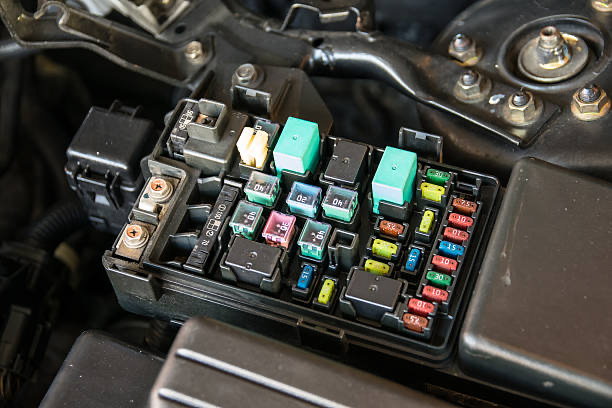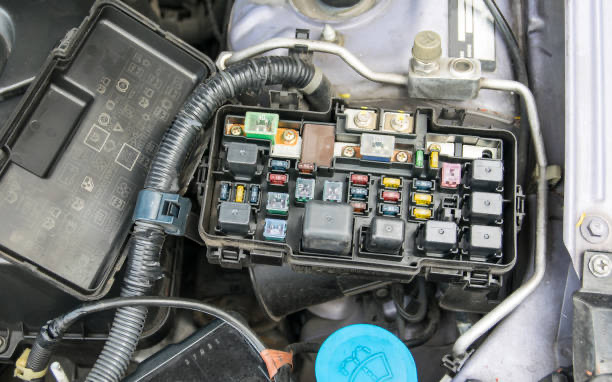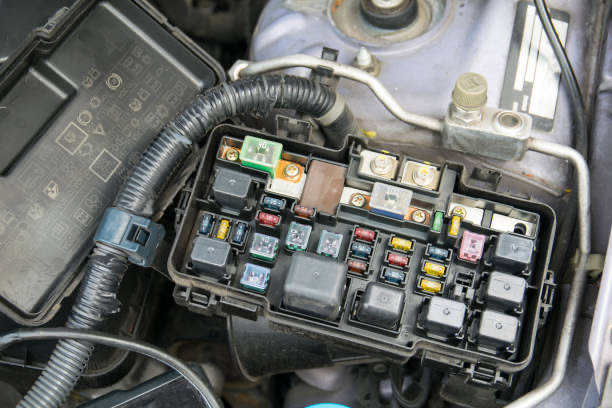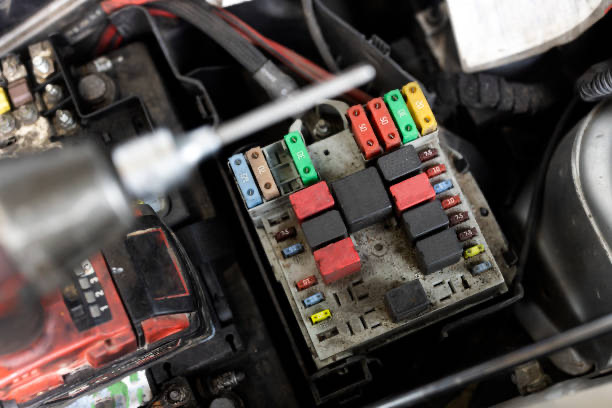Looking for the Toyota Hiace fuel pump relay location details to solve your vehicle's issues quickly? This guide is designed to help you pinpoint the relay's location and understand its function in your fuel system components. Read on to discover the secrets behind efficient relay troubleshooting!
How to Locate and Test Your Hiace Fuel Pump Relay

When it comes to maintaining your Toyota Hiace, knowing the exact location of the fuel pump relay is key. The relay plays a role similar to a traffic controller for electrical currents, ensuring smooth fuel pump operation. Below you'll find a detailed guide to locating and testing the relay:
Tools You Might Need
A 10mm socket wrench for easy access to parts
A multimeter for accurate relay testing and voltage checks
Your owner's manual for reference and additional wiring diagrams
A reliable flashlight to illuminate the engine bay fuse box
Step-by-Step Location Guide
Access the Engine Compartment: Open the engine compartment at the front of your vehicle. You might notice various labels that indicate fuel system components.
Identify the Fuse Box: Look carefully for the engine bay fuse box which often has markings like "EFI" or a small fuel pump icon. In 2020-2025 models, you typically find it on the passenger side near the battery, whereas 2016-2019 models generally have it on the driver’s side, close to the ABS unit.
Study the Wiring Diagram: Use the diagram provided on the fuse box cover. This wiring diagram helps in distinguishing between different relay locations and other fuse elements.
Locate Relay R10: In most Toyota Hiace models, the fuel pump relay is labeled as R10. Its standard position is usually consistent, but always refer to the specific model year wiring diagram for confirmation.
Why Fuel Pump Relay Location Matters

Understanding the exact location of your Toyota Hiace fuel pump relay is crucial for proper maintenance and troubleshooting. An accurately located relay can help you avoid common issues that lead to starting problems or erratic engine behavior. Here’s what you should keep an eye on:
Starting Problems: Your engine may crank without starting if the relay fails.
Intermittent Power Loss: A faulty relay might cause momentary power loss impacting the fuel pump operation.
Dashboard Alerts: Rear warning lights such as the Check Engine or EFI light often signal potential issues with the relay.
Audible Clues: You might also hear clicking sounds from the fuse box during attempted starts.
Maintenance Best Practices
Regular relay maintenance can extend its service life and ensure your fuel system components work efficiently. Consider these best practices:
Annual Contact Cleaning: Clean the relay contacts once a year to remove any built-up debris.
Routine Testing: Every 30,000 km, use a multimeter to test the relay’s resistance and ensure it meets the expected voltage values.
Scheduled Replacement: Regardless of current performance, replacing the relay every 5 years can help preempt any sudden failure.
Understanding Your Fuel System Components

It’s important to have a comprehensive overview of related fuel system components. Here’s a quick look at what else might require attention:
Component | Location | Recommended Test Method |
|---|---|---|
Fuel Pump | Under the rear seats | Pressure test to ensure connectivity |
Fuel Filter | Along the driver-side frame rail | Visual inspection for blockages |
ECU | Behind the glove box | Diagnostic scan for error codes |
Pro Tips for Relay Troubleshooting
To make your relay diagnosis even more reliable, follow these practical troubleshooting tips:
Swap Test Method: Use an identical relay available in your vehicle (such as one used by the horn) and swap it with the suspected relay. This simple test can confirm if the relay is malfunctioning.
Voltage Verification: With the ignition in the ON position, use your multimeter to confirm that there is a proper 12V supply at the relay socket terminal 3.
Ground Check: Ensure there is continuity between terminal 1 of the relay and the chassis, guaranteeing proper grounding without any loose connections.
When to Seek Professional Help
Sometimes, even the best home troubleshooting might not resolve the issue. Here are some scenarios when you should consider contacting a professional:
The relay replacement does not eliminate starting problems, hinting at deeper electrical faults.
Visible signs of burnt or damaged wiring near the fuse box suggest a more complex repair.
Multiple, simultaneous electrical issues arise, indicating potential problems within the larger fuel system components.
FAQ

1. How do I safely test my Toyota Hiace fuel pump relay at home?
Ensure that your vehicle is turned off and disconnect the battery before testing the relay. Once you have access to the engine bay fuse box, use a reliable multimeter to check the voltage and resistance. Follow the step-by-step guide carefully to determine if the relay is receiving proper voltage. If you’re uncertain at any point, consider consulting a professional to avoid accidental damage.
2. Can a faulty relay affect other fuel system components?
Yes, a malfunctioning relay can sometimes trigger issues in other parts of your fuel system. The fuel pump relay controls the power supply to the fuel pump, and when it fails, it could result in pressure losses or erratic fuel delivery. This can indirectly affect components such as the fuel filter or pump. Regular relay testing and maintenance can help prevent such cascade failures.
3. What should I look for in the wiring diagram when locating the relay?
The wiring diagram typically highlights the fuse box layout and labels each relay and fuse with specific codes like R10 for the fuel pump relay. Look out for clear markings, such as fuel system icons or labels that denote fuel pump functions. This diagram acts as a visual roadmap, guiding you step-by-step to the correct location within the engine bay fuse box. It's an essential tool for anyone performing relay testing or troubleshooting.
4. How often should relay testing and maintenance be performed?
It is ideal to examine your relay's functioning every 30,000 km, using testing methods like measuring voltage with a multimeter. Additionally, you should perform a visual inspection of the relay contacts and ensure they are free from debris or corrosion at least once a year. Following these maintenance steps will help prevent sudden relay failures and ensure your fuel system remains in top condition.
5. Is it easy for a DIY enthusiast to locate and replace the fuel pump relay?
Most Toyota Hiace owners with basic mechanical skills can locate and replace the fuel pump relay by following the comprehensive guide provided. However, if you encounter any uncertainty or if the relay location does not match the standard diagrams, it is wise to seek assistance from a professional technician. This ensures not only your safety but also that no critical wiring or electrical components are inadvertently affected.
This article is for reference only. Please consult local laws and regulations for the most current legal requirements.
Read More:
Which Chinese Car Brand is Best? 2025's Top Picks
How to Transfer Salik from One Car to Another in 2025
Haval Car Made in Which Country? 2025 Manufacturing Insights
3 pics

Mustafa Karim, having been deeply involved in automotive research and development for over ten years. He is fond of Japanese cars, and their precise and energy-efficient features have influenced him. In his spare time, he loves Japanese anime and kendo, drawing inspiration from them for control system research and development. He also often shares cutting-edge automotive knowledge on platforms, contributing to industry innovation and adding strength to automotive development with his expertise.















